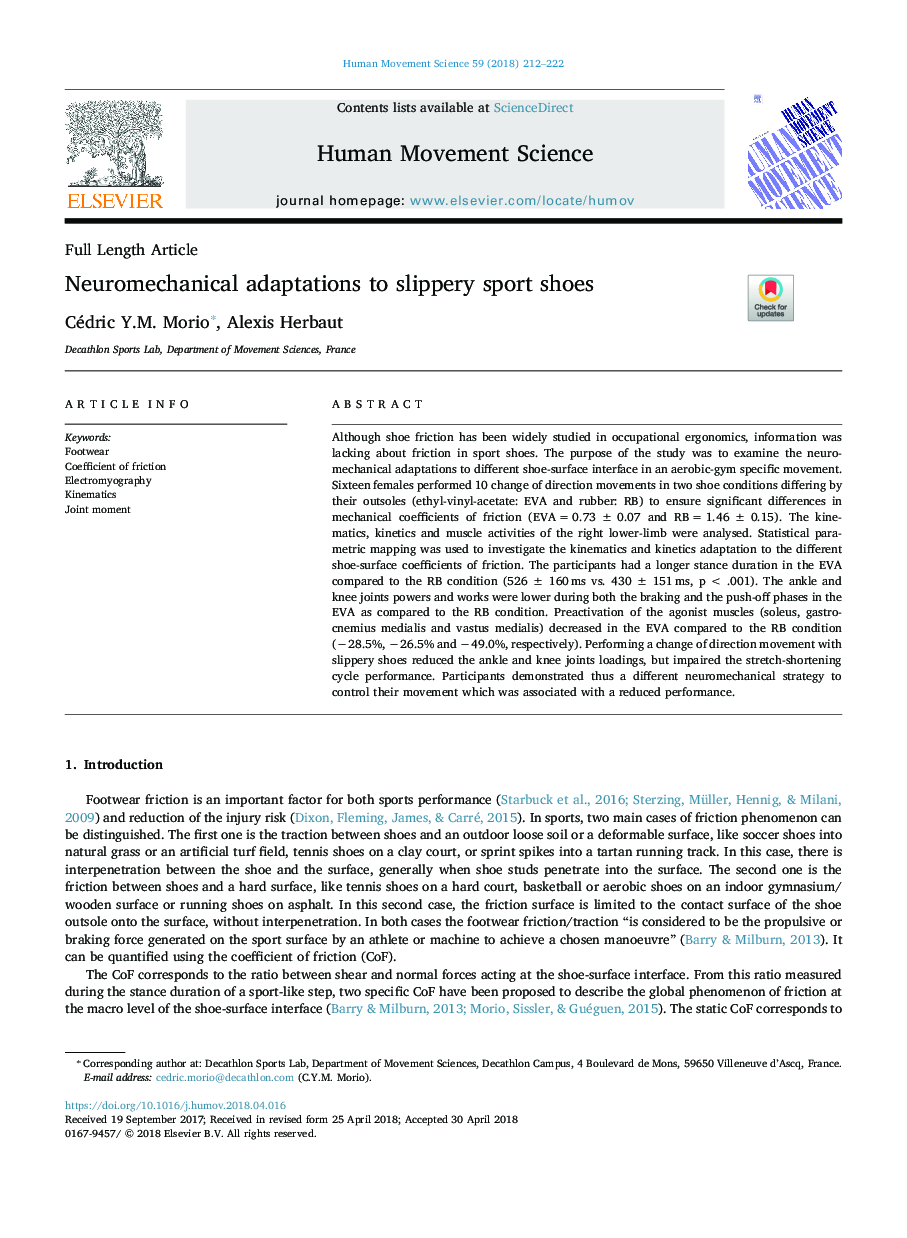| Article ID | Journal | Published Year | Pages | File Type |
|---|---|---|---|---|
| 7290910 | Human Movement Science | 2018 | 11 Pages |
Abstract
Although shoe friction has been widely studied in occupational ergonomics, information was lacking about friction in sport shoes. The purpose of the study was to examine the neuromechanical adaptations to different shoe-surface interface in an aerobic-gym specific movement. Sixteen females performed 10 change of direction movements in two shoe conditions differing by their outsoles (ethyl-vinyl-acetate: EVA and rubber: RB) to ensure significant differences in mechanical coefficients of friction (EVAâ¯=â¯0.73â¯Â±â¯0.07 and RBâ¯=â¯1.46â¯Â±â¯0.15). The kinematics, kinetics and muscle activities of the right lower-limb were analysed. Statistical parametric mapping was used to investigate the kinematics and kinetics adaptation to the different shoe-surface coefficients of friction. The participants had a longer stance duration in the EVA compared to the RB condition (526â¯Â±â¯160â¯ms vs. 430â¯Â±â¯151â¯ms, pâ¯<â¯.001). The ankle and knee joints powers and works were lower during both the braking and the push-off phases in the EVA as compared to the RB condition. Preactivation of the agonist muscles (soleus, gastrocnemius medialis and vastus medialis) decreased in the EVA compared to the RB condition (â28.5%, â26.5% and â49.0%, respectively). Performing a change of direction movement with slippery shoes reduced the ankle and knee joints loadings, but impaired the stretch-shortening cycle performance. Participants demonstrated thus a different neuromechanical strategy to control their movement which was associated with a reduced performance.
Related Topics
Life Sciences
Neuroscience
Cognitive Neuroscience
Authors
Cédric Y.M. Morio, Alexis Herbaut,
